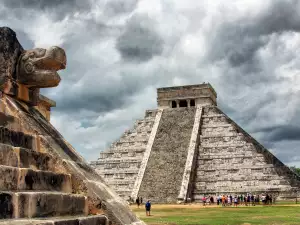Two ancient cities were found in Mexico during archaeological digs. Further investigation of the cities may reveal the full history of the earliest capitals, such as Palenque and Tikal.
It is believed that the newly discovered ancient cities were abandoned by the Mayans in order to relocate to the Yucatan Peninsula, where they founded one of the most emblematic cities of antiquity - Chichen Itza. The 2 new archaeological discoveries are located in the southeastern Mexican state of Campeche.
The first city, known as Tamchen, contains plazas, palace-like structures and a 49 ft (15 m) pyramid. The second city is called Lagunita. American researcher Eric Von Euw was the first to document this site 40 years ago.

Typical Mayan buildings could be seen in his drawings but they were never published in any official publications and with time the exact location of the site was lost.
However, his drawings and photographs of the area greatly helped archaeologists reach the ancient city. The experts state that Lagunita was a city of great regional significance for the Mayans.
The 2 sites are remarkably important and will help the experts gain a deeper understanding of the political and cultural history of the ancient Mayan civilization.

Last year, another Mayan city was found among the jungles of Eastern Mexico. The ancient center was in its heyday in the period 600 - 900 AD. The find was made by a Slovenian expedition, led by Ivan Sprajc.
The archaeological team identified 15 pyramids, one of which was 75 1/2 ft (23 m) high. Among the other discoveries were ancient homes, religious temples and palaces.
That particular city was called Chactún, which translates as "Red Stone". It is thought that between 30 000 and 40 000 people lived in the city.
The archaeologists themselves said that they didn't find it as difficult to locate the ancient city as it was to reach it through the impassable jungle paths. The expedition journeyed for 3 whole weeks before they reached it.









